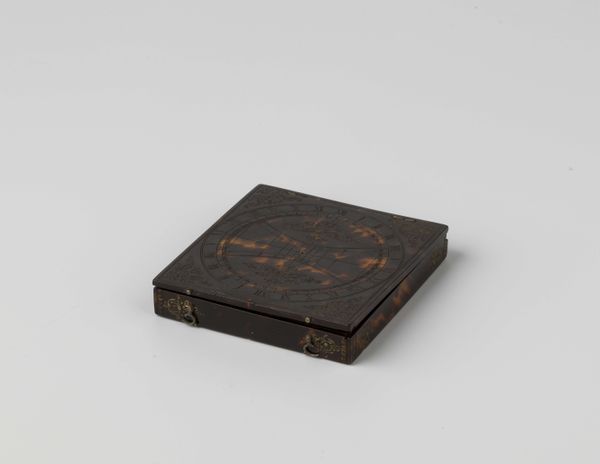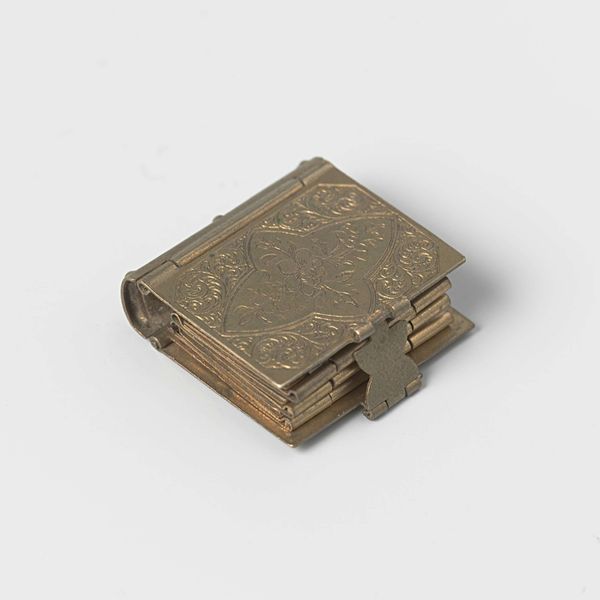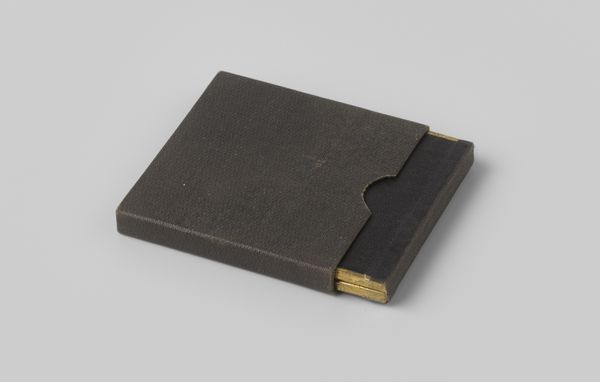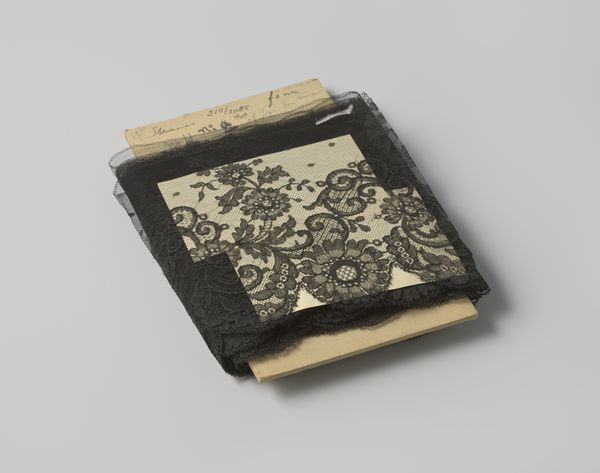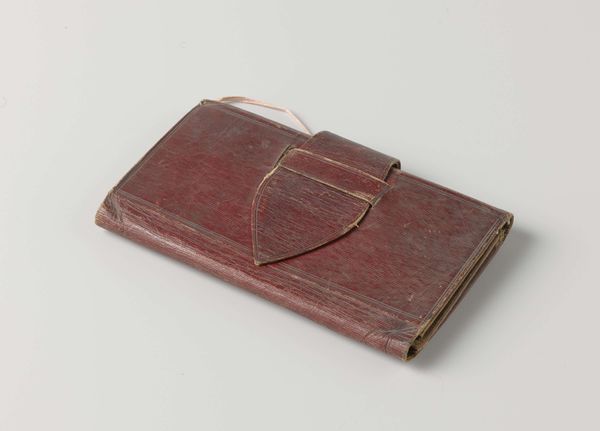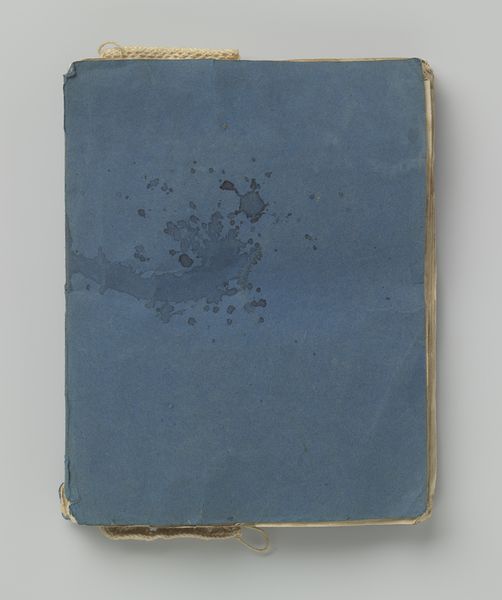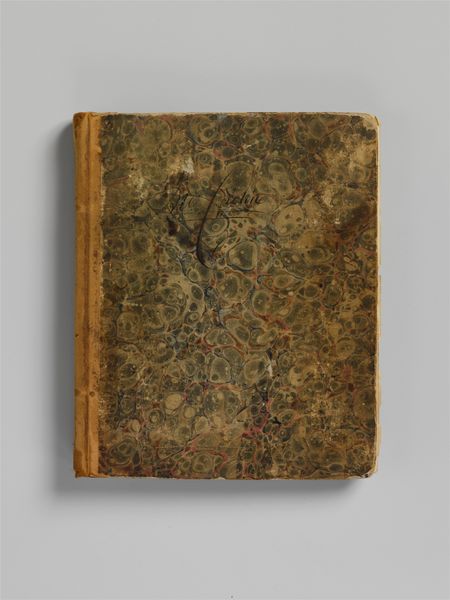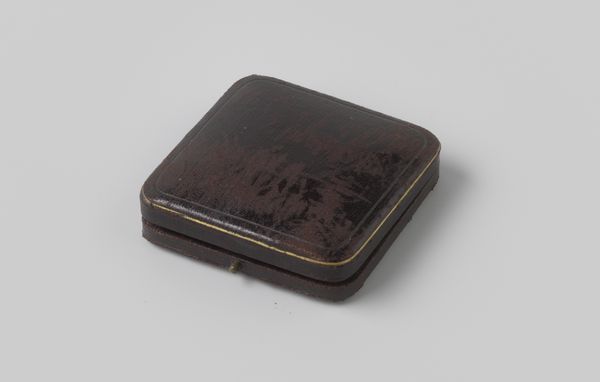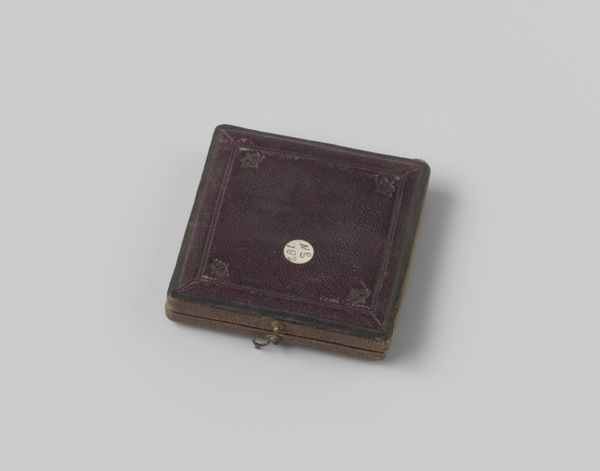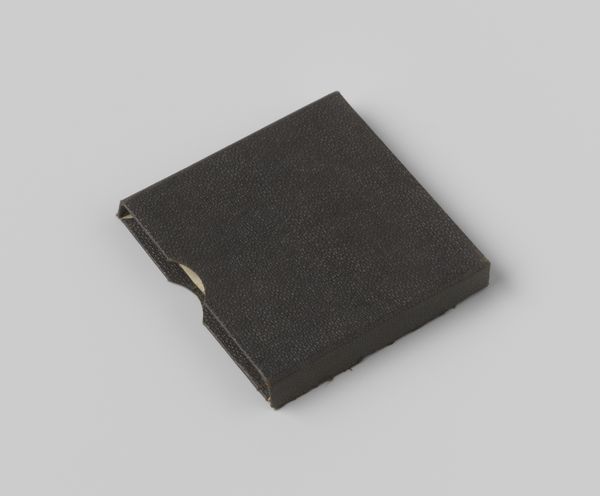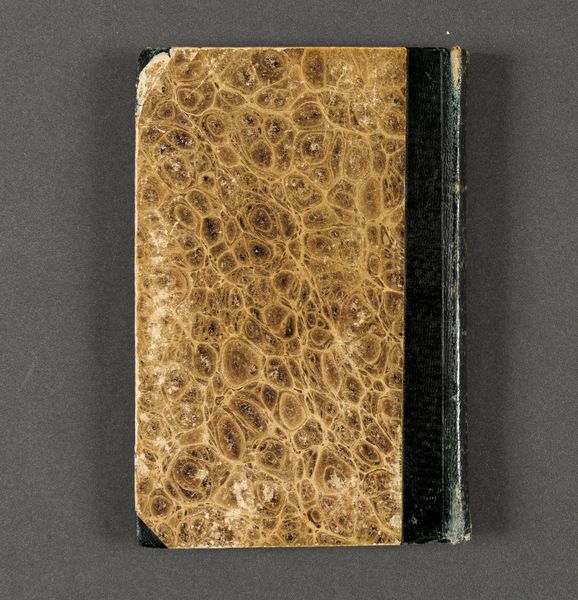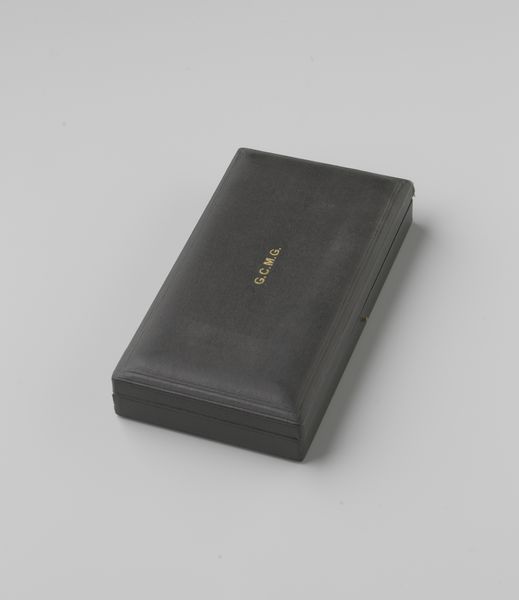
collage, metal
#
collage
#
medieval
#
metal
#
islamic-art
Dimensions: height 13.5 cm, width 8.4 cm
Copyright: Rijks Museum: Open Domain
Editor: Here we have a notebook, "Notitieboekje van de VOC kamer op de Maze (Rotterdam)," dating back to around 1750. The cover shows obvious signs of wear and tear. It's decorated with metal clasps. Looking at it, I can't help but think about the stories this little notebook could tell. How would you interpret this artifact? Curator: Considering its context within the Dutch East India Company, the VOC, this isn't simply a notebook. It’s a physical embodiment of global trade, colonialism, and power. The wear and tear speaks to the journeys it has undertaken, both physical and metaphorical, bearing witness to history. Do you notice anything particular about the metal clasps? Editor: Yes, they seem quite ornate. The silver details are hard to miss. What significance do those details have? Curator: The intricate designs act as a symbol of wealth and status, highlighting the VOC's immense economic influence. Each flourish probably intended to assert their dominance through art as a soft power tactic. Think about who would have used this notebook and for what purposes, and how its appearance shaped perceptions. Editor: That makes a lot of sense. I guess it was more than just a place to jot down numbers; it was a statement. What impact did trade and merchant culture have on artistic expression and production back then? Curator: The VOC period saw the rise of mercantile patronage of the arts. The company's wealth fuelled artistic production, commissioning paintings, engravings, and other works to depict their ships, factories, and trading posts, furthering the creation of new social classes and new expressions for established media. Do you see that connection here in this relatively humble piece? Editor: I do now. The notebook itself is evidence of that patronage and that statement. It highlights how global trade intricately weaves into culture and art, impacting every stratum of society. Curator: Precisely! Looking closer, it shows how deeply embedded the economics are with society. A simple object becomes a lens through which to see colonial expansion and its impact. Editor: Absolutely. Thank you; I learned so much about seeing objects in the bigger historical landscape.
Comments
No comments
Be the first to comment and join the conversation on the ultimate creative platform.
